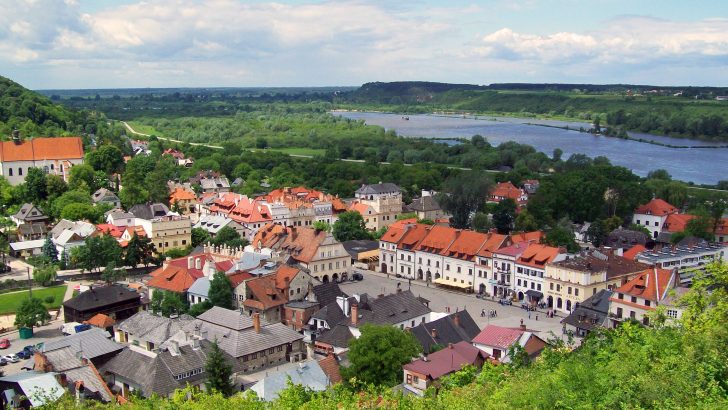The Notebook
Donal McMahon
In all fine old cities there are the obligatory sights of the guidebooks and tour buses but also the little discoveries that you make for yourself. The first are always well worth the visit but it’s the second unpredictable ones that often linger just as much or even more in the memory afterwards.
My wife Mary and I paid our first visit to Poland last autumn, staying for a week in a small hotel in Kazimierz, the old Jewish area of Krakow. Two days being set aside for the obligatory bus tours (Auschwitz and the Salt Mines), we set out every morning to explore different areas in the nice leisurely fashion that befits a holiday.
Our walks took us to many of the city’s lovely churches. A wet afternoon was spent very profitably and enjoyably inside crowded St Mary’s Basilica in the Market Square. We went to Mass on Sunday in the medieval church of Corpus Christi in Kazimierz, not able to understand the hymns or the sermon, of course, but interested all the same in comparing the Sunday liturgy there with that of our parish church back home.
Walking up fashionable Grodska Street on the look-out for a good spot for a light lunch before a visit to the nearby Jesuit church of Ss Peter and Paul, we were met by a young man with a menu in his hand assuring us that, yes indeed, we could have just a sandwich and coffee. So we followed him up a short side street as far as the corner of quiet and imposing Kanonicka Street (occupied in the past by canons from the nearby Cathedral on Wawel Hill) and sat ourselves down outside the unpretentious Pianola Café.
Pigeons
The pigeons were eager for anything we could spare of our sandwich and apple tart. Everything passed off pleasantly. Coming away, I happened to look up above the Pianola sign on the door to something that obviously dated from the building’s ‘canonical’ days: a time-worn stone lintel with the heads of two winged angels at either end and, in the middle, a shield with crossed keys. Now what were those faded Latin letters on each side of the shield? Angeli tui sancti…habitent in ea. The guide book was of no help here nor the otherwise very helpful waitress.
Back at the hotel in the evening I looked up the words on the internet. What I had deciphered turned out to be a phrase from a 5th-Century prayer later forming part of the conclusion to Compline or Night Prayer.
It is quoted by St Thomas Aquinas in the section of his Summa Theologiae devoted to the topic of angels. “May your holy angels stay here [the words above the door] and guard us in peace, and let your blessing be always upon us.”
The splendid churches of Krakow adorned with statues of saints, frescoes of angels and venerable texts from many sources are indeed awe-inspiring.
Yet what I will remember above all from that beautiful city will be those barely legible Latin words above the entrance to a piano bar located up a side street. The good canons may be gone but the hard-working lay residents there now (as well as those who come to their door) are guarded still, we pray, by the same holy angels.
At the end of the day…
My surprise encounter in the most unlikely of settings with a phrase from Compline or Night Prayer made me look up the text of that office and read it now, I admit, with real attention for the first time. Such are the consequences of any little discoveries of our own that we make! Thanks to T.S. Eliot’s poem ‘A Song for Simeon’, I was already familiar with the Nunc Dimittis, as I was, of course, with the Salve Regina at the end.
My new little Latin phrase from above the door helped to bring home forcefully to me now how much Night Prayer is a recollection of the actions of the day, a solemn moment of retrospection and evaluation.
A foreshadowing, too, of the moment when ‘life’s little day’ from the hymn Abide with Me will itself draw to a close, the moment for saying, from Compline, ‘Into your hands’ –‘In manus tuas’.
Donal McMahon taught English in the seminary at St Patrick’s College, Maynooth, from 1974-2013.


 Kazimierz, Krakow, Poland.
Kazimierz, Krakow, Poland. 